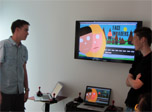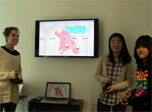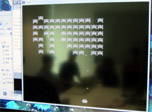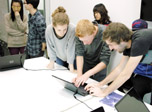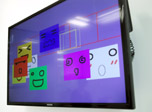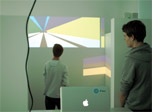Simulated and Immersive Environments 1/3 (2013): Space Action Meaning
The paper uncovers and establishes connections between phenomenology, tangible interaction and play. The notion of phenomenology touches upon what makes us human and on the role of technology in life. Phenomenology proposes that living is not about abstract existence, reasoning and problem solving; but about bodily existence and lived experience; activities which are always connected to location and situation, and appropriating these. The paper follows (among others) Husserl, Heidegger and Merleau-Ponty who highlight and develop different aspects of phenomenology, to people like Suchman, Dreyfus and Dourish who apply ideas of phenomenology to computer interaction. Since the 1980s an increasing awareness and influence of phenomenology on the academic discourse and (since about 2000) in mainstream digital media design can be spotted. Phenomenology turns out to be a powerful approach to creative work within the domain of interactive systems. In the paper, participants create artworks, interactive installations and games. The specific technical realisation (e.g. Arduino hardware and Processing or Kinect and XNA) depends on what is best suited to the design, and is discussed on a case-by-case basis.
Daniel Cermak-Sassenrath. Simulated and Immersive Environments 1/3: Space Action Meaning, Course, Auckland University of Technology, Auckland, 2013, Semester 1. |

